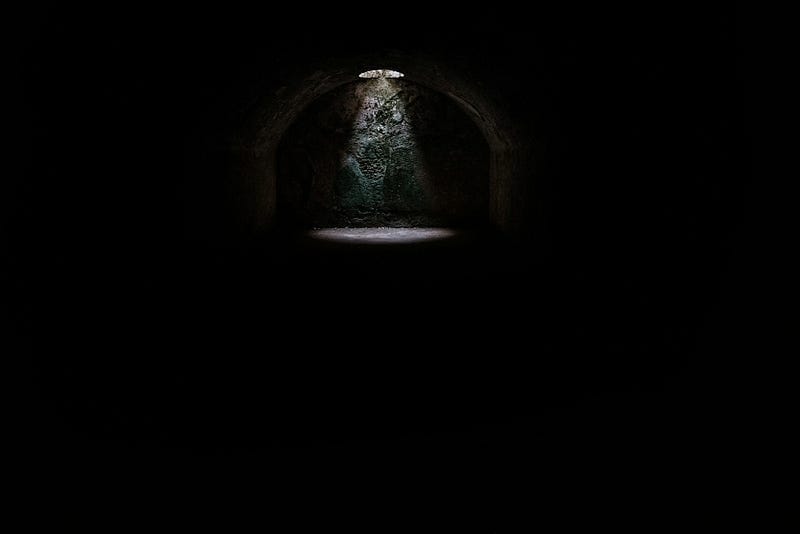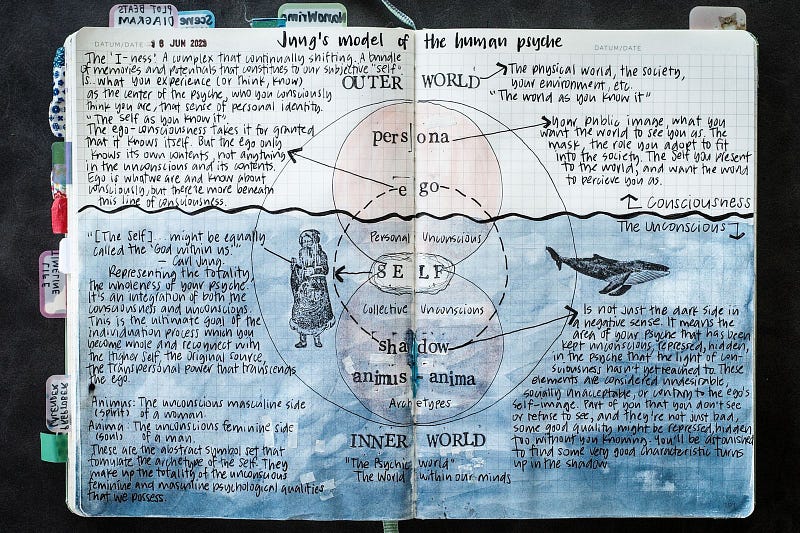On Knowing Thyself and Approaching the Unconscious Series: Part 1

I intended to write this article in one long-form format, but then it got too long. It was too long both for me to write and would be for you to read. Especially with this heavy subject, I don’t want to risk it becoming one of the TL;DR* pieces I see on the internet and often fail to finish reading.
“Until you make the unconscious conscious, it will direct your life and you will call it fate.” — Carl Jung.
Knowing who we are in the psyche realm is a complex concept to comprehend, especially if we’re not trained or educated by any of the schools of psychology. My attempt to understand this derived from the desperation to understand myself and my emotions, and to know what constitutes me. Luckily enough, I had come across Jung and his work at the time when I was approaching my unconscious around my mid-thirties. This was the beginning of a lifelong journey that has been with me for as long as I remember. The journey of being conscious of the other Self in me goes back so long ago, too long that I don’t recall the exact dimension of time or space of when it began.
As someone who was already practicing vipassana meditation and had been reflecting on my thoughts and feelings in my journals, finding Jung’s work was like the last piece of that jigsaw I was searching for my entire life. The diagram below reflects what I think is the briefest and most concise way to explain what is Jung’s theory of the human psyche.

Our Psyche is anything but two-dimensional. Psyche is ‘as above so below’, ‘as within so without’; there is the inner and outer world, conscious and unconscious, it’s beyond dimensions.
This is not to be understood as layers of the psyche according to depth but to represent the composition of the aspects that make up the human psyche as per Carl Jung’s Depth Psychology concept. The iceberg and what is visible above the surface is just a metaphor used to understand the concept of the absence of visible things doesn’t imply their non-existence.
This doesn’t mean that you will encounter the Self on the shallower layer than the Shadow, it is just a representation that the Shadow and the Ego are the center parts of who think you are; one in the Conscious and Unconscious realm. This means the Selves in the Conscious (Persona and Ego) and Unconscious (Shadow, and Animus and Anima) realm are all parts of who you are, your integrated Self, Higher Self, the Source, the God; which is the ultimate goal of the Individuation.
In short, our psyche is formed in layers of consciousness and the unconscious realms. Think of an iceberg floating in the sea of our mind, there is a part where it floats and is visible to us– this part is the conscious part of our psyche, the part we are consciously aware of its existence. This area is where the light of our consciousness is able to shine to, and it consists of two parts.
- The Persona.
Jungian Depth Psychology describes the idea as a fundamental element of the human psyche. This key concept represents the social mask or facade that an individual presents to the outside world, our public image, our psychological clothing– the self that we want the world to see. I am a good daughter, a supporting wife, a good friend, etc, anything we are (or think we are) in the eye of society.
The persona serves as a protective shield that allows individuals to function in society and adapt to social norms, expectations, and conventions. It encompasses the aspects of an individual’s personality that are shown to others, often reflecting societal or cultural expectations rather than their true inner selves. The persona can be seen as a necessary aspect of human socialization and interaction, as it helps individuals fit into various social contexts and maintain harmonious relationships. Jung warned that an excessive identification with the persona could lead to the suppression or neglect of our integrated, individuated, inner Self.
2. The Ego.
The word has been widely but incorrectly used in our society. Ego isn’t just the confidence we think we have or an arrogant quality of someone we hate, it is basically the ‘I-ness’; a bundle of memories and potential that constitutes our subjective ‘self’. This is ‘the self as we know it’, this is what we experience (or think, or know) about who we are. I am a writer, I am a good and polite person, and I don’t like to socialize much because people drain my energy. But what you know about who you are is not all there is to it, the ego-consciousness takes it for granted that it knows its own contents, not anything in the unconscious which lies beyond what we can perceive.
We will move to the bread and butter of this post in part 2, the part where we descend into the unknown below the surface of our awareness– the Unconscious. I will focus on the aspects I think are efficient for us to begin the journey towards the Self (who we really are and can become; the Inner Self, the Higher Self, the Original Source, the Soul, those names you might already be familiar with) which are the Shadow, the Personal, and the Collective Unconscious, and the Self.
Until next time, happy reading.
- TLDR — stands for “Too Long; Didn’t Read.” It is often used as an internet acronym to provide a brief summary or a concise version of a lengthy piece of text or article.
No spam, no sharing to third party. Only you and me.






